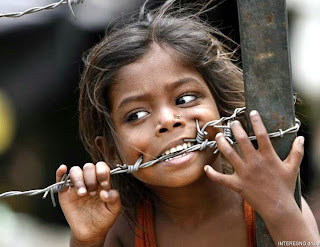Sunday, May 30, 2010
Tuesday, May 25, 2010
Monday, May 24, 2010
Parts of Gurkha-Knife
Kukri Blade
Keeper (Hira Jornu): Spade/Diamond shaped metal/brass plate used to seal the butt cap.
Butt Cap (Chapri): Thick metal/brass plate used to secure the handle to the tang.
Tang (Paro): Rear piece of the blade that goes through the handle
Bolster (Kanjo): Thick metal/brass round shaped plate between blade and handle made to support and reinforce the fixture.
Spine (Beet): Thickest blunt edge of the blade.
Fuller/Groove (Khol): Straight groove or deep line that runs along part of the upper spine.
Peak (Juro): Highest point of the blade.
Main body (Ang): Main surface or panel of the blade.
Fuller (Chirra): Curvature/Hump in the blade made to absorb impact and to reduce unnecessary weight.
Tip (Toppa): Starting point of the blade.
Edge (Dhaar): Sharp edge of the blade.
Belly (Bhundi): Widest part/area of the blade.
Bevel (Patti): Slope from the main body until the sharp edge.
Cho/Notch (Kaudi): A distinctive cut (numeric 3 like shape) in the edge functioned as a blood dropper and others.
Ricasso (Ghari): Blunt area between notch and bolster.
Rings (Harhari): Round circles in the handle.
Rivet (Khil): Steel or metal bolt to fasten or secure tang to the handle.
Tang Tail (Puchchar): Last point of the kukri blade.
Keeper (Hira Jornu): Spade/Diamond shaped metal/brass plate used to seal the butt cap.
Butt Cap (Chapri): Thick metal/brass plate used to secure the handle to the tang.
Tang (Paro): Rear piece of the blade that goes through the handle
Bolster (Kanjo): Thick metal/brass round shaped plate between blade and handle made to support and reinforce the fixture.
Spine (Beet): Thickest blunt edge of the blade.
Fuller/Groove (Khol): Straight groove or deep line that runs along part of the upper spine.
Peak (Juro): Highest point of the blade.
Main body (Ang): Main surface or panel of the blade.
Fuller (Chirra): Curvature/Hump in the blade made to absorb impact and to reduce unnecessary weight.
Tip (Toppa): Starting point of the blade.
Edge (Dhaar): Sharp edge of the blade.
Belly (Bhundi): Widest part/area of the blade.
Bevel (Patti): Slope from the main body until the sharp edge.
Cho/Notch (Kaudi): A distinctive cut (numeric 3 like shape) in the edge functioned as a blood dropper and others.
Ricasso (Ghari): Blunt area between notch and bolster.
Rings (Harhari): Round circles in the handle.
Rivet (Khil): Steel or metal bolt to fasten or secure tang to the handle.
Tang Tail (Puchchar): Last point of the kukri blade.
Kukri Scabbard
Frog (Faras): Belt holder especially made of thick leather (2mm to 4mm) encircling the scabbard close towards the throat.
Upper Edge (Mathillo Bhaag): Spine of the scabbard where holding should be done when handling a kukri.
Lace (Tuna): A leather cord used to sew or attach two ends of the frog. Especially used in army types (not available in this pic).
Main Body (Sharir): The main body or surface of the scabbard. Generally made in semi oval shape.
Chape (Khothi): Pointed metallic tip of the scabbard. Used to protect the naked tip of a scabbard.
Loop (Golie): Round leather room/space where a belt goes through attached/fixed to the keeper with steel rivets.
Throat (Mauri): Entrance towards the interior of the scabbard for the blade.
Strap/Ridge (Bhunti): Thick raw leather encircling the scabbard made to create a hump to secure the frog from moving or wobbling (not available in this pic).
Lower Edge (Tallo Bhag): Belly/curvature of the scabbard.

The kukri (Devanāgarī: खुकुरी) (also sometimes spelled khukri or khukuri) is a curved knife which can be used as a tool as well as a close combat mêlée weapon. The cutting edge is inwardly curved in shape and is the icon of Nepal. It was and in many cases still is the basic and traditional utility knife of the Nepalese people. Very effective when used as a weapon, it is a symbolic weapon for all Gurkha regiments throughout the world and the Nepalese Army signifying the courage and valor of the bearer in the battlefield. It is a part of many traditional rituals among different ethnic groups of Nepal, including one where the groom has to wear it during the wedding ceremony. It is also a part of the regimental weaponry and heraldry of the Royal Gurkha Rifles. It is known to many people as simply the "Gurkha Blade" or "Gurkha Knife".
Subscribe to:
Posts (Atom)





